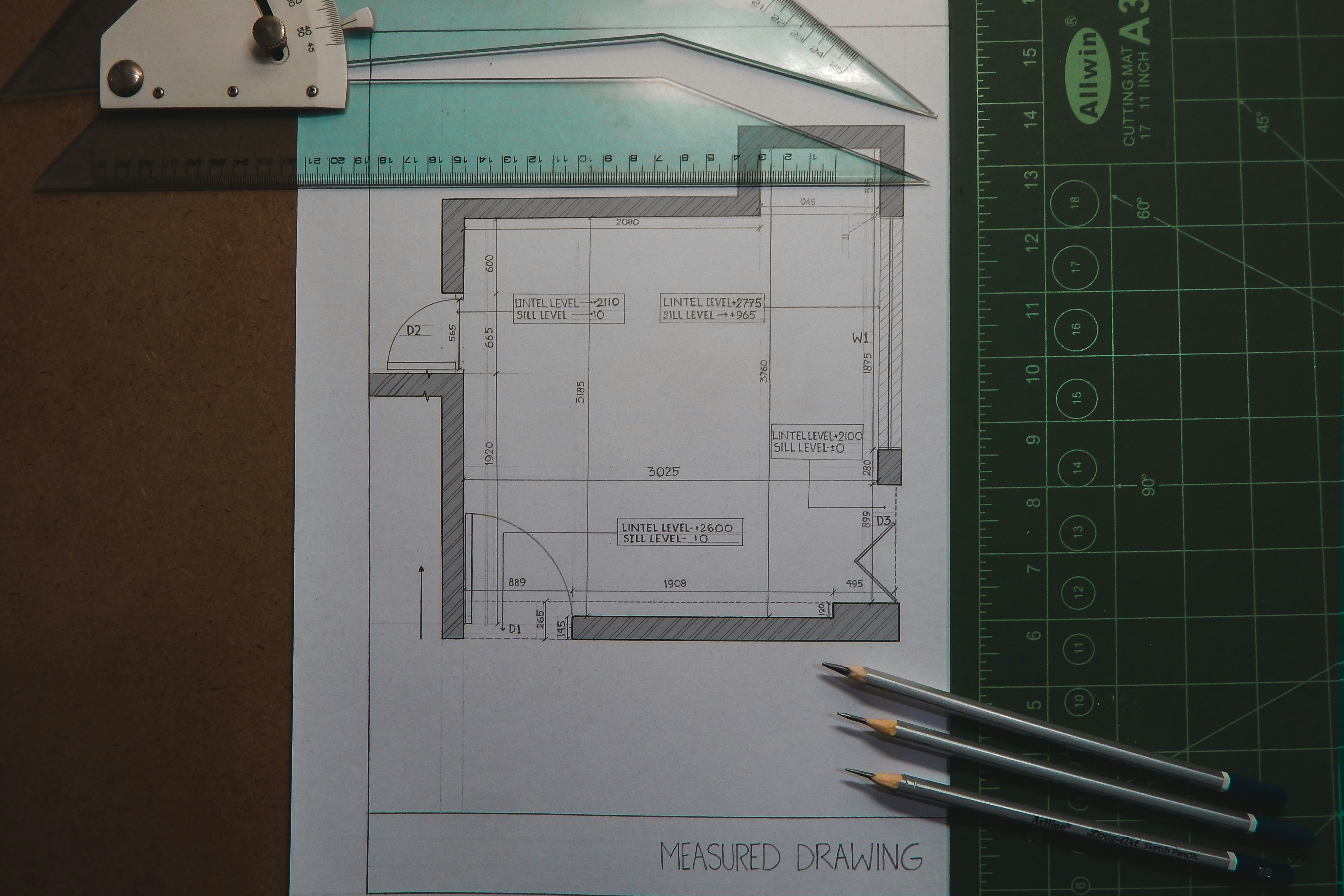For anyone embarking on a construction project in the UK, understanding the planning permission process is essential. Whether you're planning a new home, an extension, or a significant renovation, navigating the complexities of the planning system can be challenging. This comprehensive guide aims to demystify UK planning permission, explaining the different types of permission, when they're required, and how to increase your chances of a successful application.
What is Planning Permission?
Planning permission is the formal approval from your local planning authority (LPA) to carry out development or make significant changes to a building or land. It's a separate process from building regulations approval, which focuses on the technical construction standards rather than the principle of development.
The UK planning system serves several important purposes:
- Controlling the appearance and character of towns and countryside
- Protecting historically or architecturally significant buildings
- Ensuring developments are suitable for their locations
- Preventing overdevelopment and preserving amenity
- Addressing environmental considerations
The system is administered locally but operates within a national framework of policies and guidelines, ensuring some consistency across different areas while allowing for local variations and priorities.
When Do You Need Planning Permission?
Not all construction projects require planning permission. The general rule is that you need permission for any development that constitutes a "material change of use" or involves significant physical alterations to a property. Here are some common scenarios:
Projects That Typically Require Planning Permission:
- Building a new house
- Large extensions that exceed permitted development limits
- Extensions to flats or maisonettes (these have no permitted development rights)
- Extensions or alterations to listed buildings
- Extensions or alterations to properties in designated areas (conservation areas, Areas of Outstanding Natural Beauty, etc.)
- Changes to the use of buildings or land (e.g., converting a house to flats or a shop to a restaurant)
- Significant alterations to a building's external appearance
- Removing or altering trees protected by Tree Preservation Orders
Projects That May Not Require Planning Permission:
Some smaller-scale projects can be carried out under "Permitted Development Rights" (PDRs), which allow certain types of development without the need for a full planning application. These include:
- Single-storey rear extensions up to 4m (detached houses) or 3m (semi-detached/terraced)
- Loft conversions up to 40-50 cubic meters (depending on property type)
- Garage conversions (if used as part of the main home)
- New windows and doors (unless in conservation areas or listed buildings)
- Internal alterations that don't affect the external appearance
- Garden buildings and structures that meet specific criteria
It's important to note that permitted development rights can be removed or restricted in certain areas or for specific properties, particularly in conservation areas, for listed buildings, or in areas covered by "Article 4 Directions." Always check with your local planning authority if you're unsure.
 Thorough preparation of planning documents is essential for a successful application
Thorough preparation of planning documents is essential for a successful application
Types of Planning Permission
There are several different types of planning applications depending on your project's nature and the level of certainty you require:
Full Planning Permission
This is the most comprehensive form of planning permission and provides consent for all aspects of the proposed development. It's suitable when you have finalized your plans and are ready to proceed with the project. A full application requires detailed plans and supporting documentation.
Outline Planning Permission
This establishes the principle of development without approving specific details. It's useful when you want to establish whether a development would be acceptable before investing in detailed designs. If granted, you must submit a subsequent "reserved matters" application with the specifics before proceeding.
Reserved Matters
Following outline permission, these applications deal with the specific details that were not included in the outline application, such as appearance, landscaping, layout, scale, and access.
Lawful Development Certificate (LDC)
There are two types of LDC:
- LDC for Proposed Use or Development: Confirms that a proposed project doesn't require planning permission (usually because it falls under permitted development)
- LDC for Existing Use or Development: Confirms that an existing use, building work, or activity without planning permission is lawful (usually because it has been in place for a certain period without enforcement action)
Prior Approval
For some permitted development rights, you need to notify the local authority and receive "prior approval" before proceeding. This typically applies to larger home extensions, changes of use under permitted development, and some agricultural buildings.
Listed Building Consent
Required for any works to alter, extend, or demolish a listed building in a way that affects its character as a building of special architectural or historic interest. This is needed in addition to planning permission.
Conservation Area Consent
Required for the demolition of certain unlisted buildings in conservation areas.
"The most successful planning applications are those that demonstrate a clear understanding of local planning policies and show how the proposed development will complement rather than conflict with the character of the surrounding area."
— Richard Thompson, Founder & Director of Britannia Builders
The Planning Application Process
The planning application process involves several stages:
1. Pre-Application Research and Consultation
- Research local planning policies and constraints
- Review previous decisions for similar developments
- Consider seeking pre-application advice from the local planning authority
- Consult with neighbors and other stakeholders
2. Preparing Your Application
A typical planning application includes:
- Completed application forms
- Location plan (usually 1:1250 scale)
- Site plan/block plan (usually 1:500 scale)
- Existing and proposed elevations and floor plans
- Design and access statement (for certain applications)
- Supporting documentation as required (e.g., ecology surveys, heritage statements, flood risk assessments)
- Application fee
3. Submission and Validation
Applications can be submitted either directly to the local planning authority or via the Planning Portal website. The authority will check that all necessary documents have been provided before validating the application.
4. Consultation Period
Once validated, the local authority will:
- Publish the application on their website
- Consult with statutory consultees (e.g., highways authority, environment agency)
- Notify neighbors and display site notices
- Invite comments during a consultation period (usually 21 days)
5. Assessment
A planning officer will assess the application against relevant planning policies and consider:
- The development plan (local plan or neighborhood plan)
- National planning policies
- Consultation responses
- Material planning considerations (e.g., traffic impact, visual impact, privacy)
6. Decision
Most decisions are made within 8 weeks for minor applications or 13 weeks for major developments. Decisions are made either:
- By the planning officer under delegated powers
- By the planning committee for large or controversial applications
The outcome will be either:
- Approval (possibly with conditions)
- Refusal (with reasons)
7. Post-Decision
If approved, you must:
- Comply with any pre-commencement conditions
- Begin development within 3 years (unless specified otherwise)
- Follow the approved plans exactly or seek approval for changes
If refused, you can:
- Amend the proposal and submit a new application
- Appeal to the Planning Inspectorate (within 6 months of the decision)
 Detailed architectural drawings are a crucial component of planning applications
Detailed architectural drawings are a crucial component of planning applications
Increasing Your Chances of Success
Here are some strategies to improve the likelihood of planning permission approval:
Understand Local Policies
Research your local authority's development plan and design guidance thoroughly. This is the primary framework against which your application will be judged. Pay particular attention to:
- Local Plan or Core Strategy
- Supplementary Planning Documents
- Design Guides or Codes
- Conservation Area Character Appraisals (if applicable)
Seek Pre-Application Advice
Many local authorities offer pre-application advice services. While these usually involve a fee, they can provide valuable insights into:
- The authority's likely view of your proposal
- Potential issues that need addressing
- Suggestions for improvements to increase chances of approval
- Required supporting documents
This investment upfront can save considerable time and money by avoiding the need for multiple applications.
Engage Professional Help
Consider working with professionals who understand the planning system:
- Architects with local experience can design schemes sensitive to local context
- Planning consultants can navigate complex planning policies and applications
- Specialist consultants (for heritage, ecology, transport, etc.) can provide technical reports that address specific concerns
Consult with Neighbors
Early engagement with neighbors can help identify and address concerns before submission:
- Show them your plans and explain the proposal
- Consider reasonable amendments to address legitimate concerns
- Document this consultation in your application
Design Sensitively
Good design that respects the local context is more likely to succeed:
- Consider the scale, form, and materials of surrounding buildings
- Address privacy, overlooking, and overshadowing concerns
- Include high-quality landscaping proposals
- Prioritize sustainability features
Provide Robust Supporting Documentation
Anticipate potential concerns and address them proactively with supporting evidence:
- Design and Access Statement that clearly explains the rationale for your proposal
- Relevant technical reports (e.g., heritage statement for historic areas, flood risk assessment for vulnerable locations)
- High-quality visual materials including accurate drawings and contextual visualizations
Flexibility and Compromise
Be prepared to adapt your proposal if necessary:
- Respond constructively to feedback from planning officers
- Consider fallback positions if your ideal scheme faces resistance
- Be willing to negotiate on reasonable conditions
Common Reasons for Refusal
Understanding common reasons for planning refusal can help you avoid potential pitfalls:
Design and Character Issues
- Inappropriate scale, bulk, or massing
- Poor-quality design that doesn't enhance the area
- Materials or architectural details that clash with local character
- Harm to the setting of listed buildings or conservation areas
Amenity Impacts
- Overlooking and loss of privacy to neighboring properties
- Overshadowing and loss of daylight
- Overbearing impact or sense of enclosure
- Noise, disturbance, or other nuisance
Highways and Parking
- Inadequate parking provision
- Highway safety concerns
- Poor access arrangements
- Traffic generation in sensitive areas
Environmental Concerns
- Flood risk
- Impact on protected species or habitats
- Trees protected by Tree Preservation Orders
- Contamination issues not adequately addressed
Policy Conflicts
- Development contrary to land use designations
- Conflict with specific local plan policies
- Failure to meet sustainability requirements
- Inappropriate development in protected areas (Green Belt, AONB, etc.)
Understanding Permitted Development Rights
Permitted Development Rights (PDRs) allow certain types of development without the need for planning permission. Understanding these rights can save time and money on smaller projects.
Key Permitted Development Allowances for Householders
For a typical house (not flats, maisonettes, or in designated areas):
Extensions
- Single-storey rear extension up to 4m deep (detached house) or 3m (semi-detached/terraced)
- Under the temporary larger extension scheme (until May 2024), these limits increase to 8m and 6m respectively, but require prior approval
- Side extension up to half the width of the original house and no more than 4m high
- Two-storey rear extension up to 3m deep, at least 7m from the rear boundary
- All extensions must use similar materials to the existing house
- Extensions cannot exceed 50% of the land around the original house
Roof Alterations
- Loft conversion with dormer up to 40 cubic meters (terraced house) or 50 cubic meters (detached/semi-detached)
- Roof alterations cannot be higher than the existing roof or extend beyond the roof plane on the principal elevation
Outbuildings
- Sheds, garages, and other outbuildings up to 2.5m high (if within 2m of a boundary) or 4m high (elsewhere)
- Cannot cover more than 50% of the land around the original house
- Cannot be used as self-contained living accommodation
Important Limitations
Permitted development rights are restricted or removed in:
- Conservation Areas
- National Parks, Areas of Outstanding Natural Beauty, and the Broads
- World Heritage Sites
- Listed Buildings
- Areas covered by Article 4 Directions
Always check with your local planning authority before relying on permitted development rights, as they can be modified by local policies or removed from specific properties.
Lawful Development Certificates
Even when using permitted development rights, it's advisable to apply for a Lawful Development Certificate (LDC):
- Provides formal confirmation that your project doesn't require planning permission
- Creates a legal record that can be important when selling your property
- Protects against future enforcement action
Navigating Specialist Planning Scenarios
Listed Buildings
Listed buildings are protected for their historical or architectural significance:
- Any works that affect the character of a listed building require Listed Building Consent
- This applies to both external and internal works, regardless of which parts are specifically mentioned in the listing
- Unauthorized works to listed buildings can result in criminal prosecution
- Early consultation with conservation officers is essential
- Applications typically require detailed heritage impact assessments
Conservation Areas
Conservation areas have special architectural or historic interest:
- Demolition of buildings requires Conservation Area Consent
- Many permitted development rights are restricted
- Design is scrutinized more carefully
- Trees have additional protection
- Applications should reference the Conservation Area Character Appraisal
Self-Build Projects
For those building their own home:
- Consider outline permission to establish principle before investing in detailed designs
- Research potential Community Infrastructure Levy (CIL) exemptions available for self-builders
- Factor in planning timescales when creating project schedules
- Consider local design codes and vernacular
Change of Use Applications
Converting from one use class to another:
- Some changes of use are permitted development (e.g., certain office to residential conversions)
- Others require full planning permission
- Consider impact on parking, noise, and other local amenities
- May need to demonstrate that the existing use is no longer viable
The Planning Appeal Process
If your application is refused, you have the right to appeal to the Planning Inspectorate:
Appeal Options
- Written representations - The most common and quickest method, involving written statements from all parties
- Hearing - An informal round-table discussion led by an inspector
- Public inquiry - A formal process similar to a court case, typically for complex or controversial cases
Appeal Timeframes
- For householder applications: 12 weeks from the decision date
- For most other applications: 6 months from the decision date
Success Considerations
Appeals are more likely to succeed when:
- The refusal reasons are based on subjective judgments rather than clear policy violations
- There are precedents for similar approved developments
- The local authority has failed to determine the application within statutory timeframes
- You can demonstrate that the development complies with national policy even if it conflicts with local policy
Professional representation at appeal (from a planning consultant or planning lawyer) can significantly increase your chances of success, particularly for complex cases.
Conclusion
Navigating the UK planning system can be complex, but understanding the process and requirements is essential for a successful construction project. Taking time to research local policies, engage with planning officers early, and prepare a thorough application will significantly increase your chances of approval.
Remember that planning decisions are based on established policies and material considerations, not personal preferences. A constructive, evidence-based approach that demonstrates how your proposal aligns with planning objectives will yield the best results.
At Britannia Builders, we have extensive experience managing planning applications for a wide range of projects across the UK. Our team can guide you through the process, from initial concept to successful permission, ensuring your construction project progresses smoothly and efficiently.
Whether you're planning a simple extension or a complex new build, we encourage you to seek professional advice early in your project planning to identify potential issues and develop strategies to address them.



